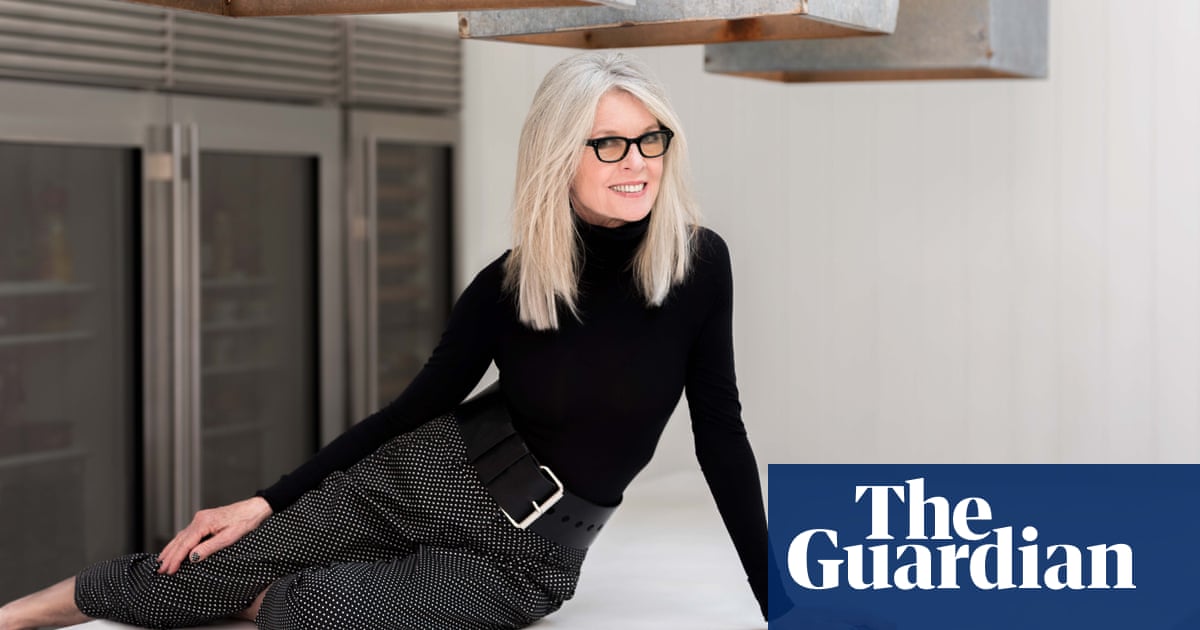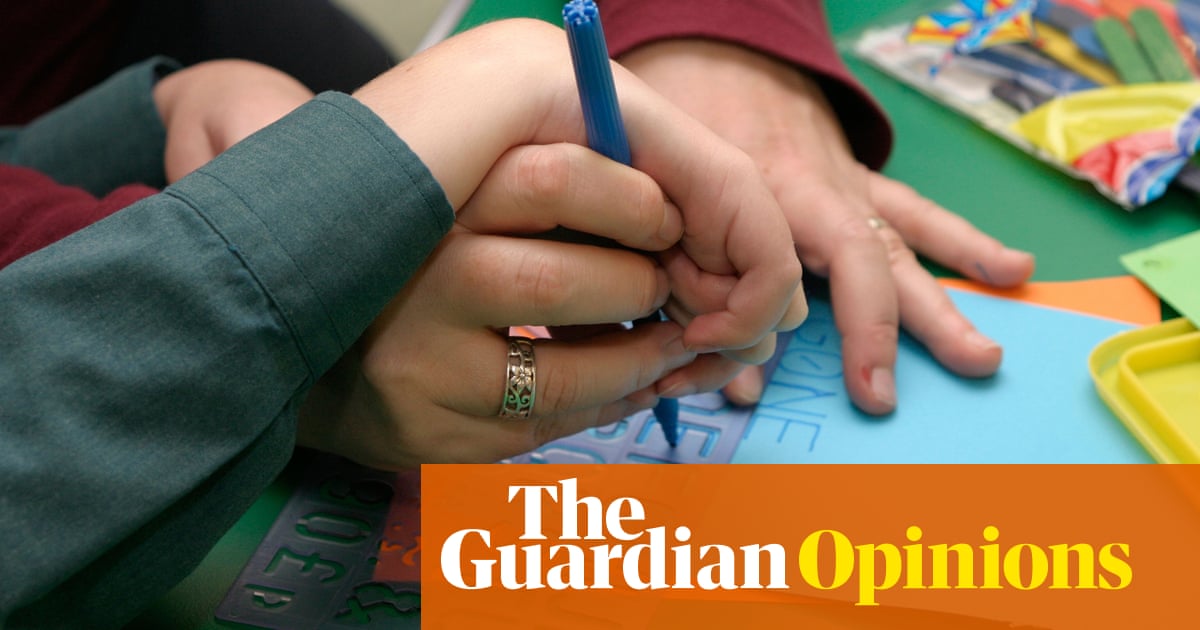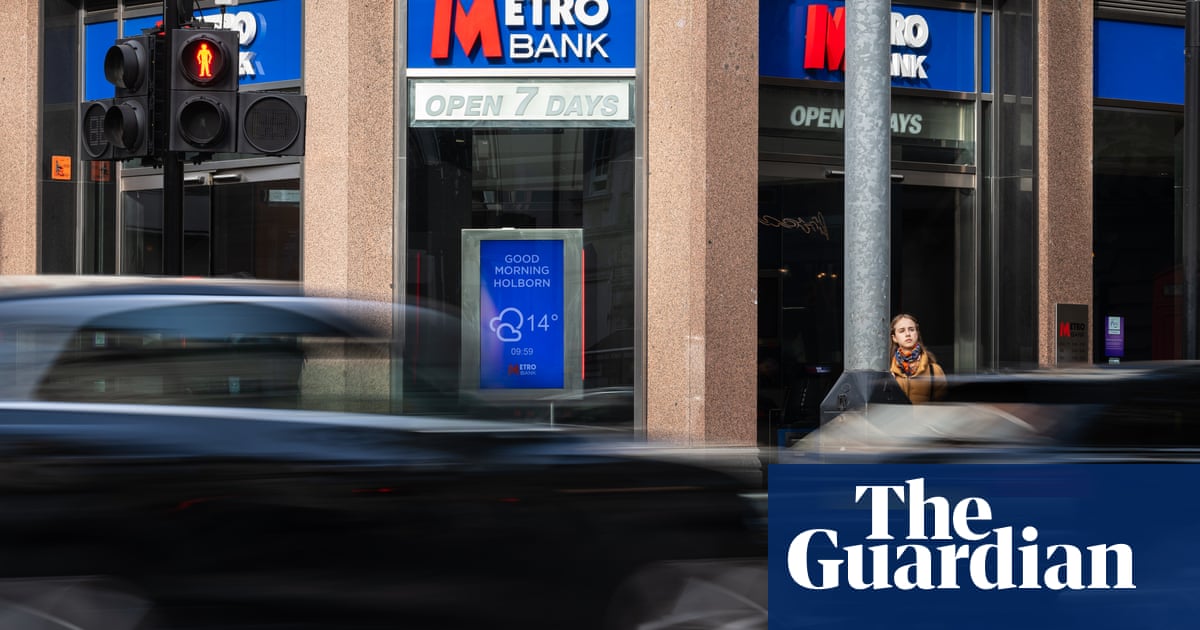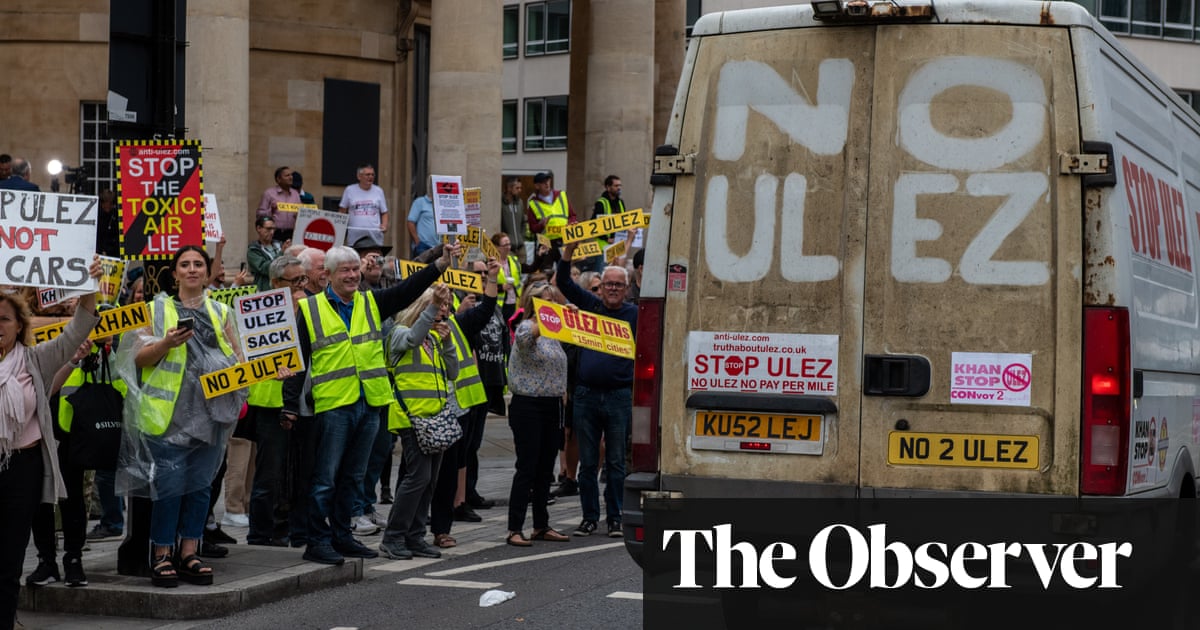
Even before her dog almost dies, my call with Diane Keaton is chaotic. There’s a delay on the line. Conversation stops and starts like a milk float. I’d emailed questions but she hasn’t read them. She wants to talk about doors. Every answer comes stacked with caveats. It’s fun and stressful – and smart. She wants to escape her own interview.
Now 77, Hollywood’s most self-effacing star doesn’t do video calls. Neither does her character in the Book Club films, the latest of which starts with her struggling to speak via her laptop to best friends played by Jane Fonda, Mary Steenburgen and Candice Bergen.
“It’s always better when you don’t see me,” she says, “or see them, because it becomes so strange, you know? I guess I mean: it’s not that bad or anything, but it’s a little odd.” We both talk, stop, talk over each other again, a car crash of chatter. Yes, phone is so much better, I say, and if there’s any nicer sound than Diane Keaton laughing at your joke, I’d like to hear it.
A pause. “I think a little goes plenty,” she says. “I mean, don’t do much more.” Not for the last time, I’m not exactly sure what she meant.
Anyway, in Book Club: The Next Chapter, a sequel to the 2018 hit, Keaton once again plays Diane, a woman in her 70s, bumbling, eccentric, fond of men’s tailoring and wide-brimmed hats. “We stole a bunch of ideas from her life,” says director Bill Holderman, who co-wrote with his wife, Erin Simms, who speak to me over Zoom a few days later. Keaton did suggest they change her character’s name, says Simms. “Something like ‘Leslie’. But it was already the second day of shooting.”
In the first film, the widowed Diane hooks up with Andy García. In the sequel, the four friends go to Italy for Fonda’s bachelorette party. Cue big dinners, long montages (frocks, shops, naked statues), endless double entendre and a remarkably large part for Holby City’s Hugh Quarshie. And booze. So much booze.
I was impressed by the drinking, I say; is it accurate? “Oh yeah,” says Keaton gamely. “About six in the morning I’ll have a Lillet, or a chardonnay.” It’s now 11am; how many bottles down is she? “Oh God, maybe 25?”
In fact, Keaton has put her name to a white and a red, but both are designed to be drunk over a tumbler of ice – not the serving suggestion of the really hardened wino. Still, she’s keen to run with the fiction: “Maybe then I’ll get a different kind of part. ‘I hear Diane Keaton is a heavy drinker and you can really push her around. It makes it much easier if she just shuts up and drinks.’ Ridiculous!”
The first Book Club made eight times its budget by serving undercatered over-60s who loved Sex and the City. Its story saw all four women variously shaken by reading Fifty Shades of Grey; this time round, their homework is The Alchemist. It’s less integral to the plot. There’s some stuff about fatalism. “Not something I ramble on about,” says Keaton, “because it’s all part of it, of what we all deal with.” A gnomic pause. “And then, sometimes, it’s kind of great.”
What about her character’s big speech about hanging on to youthful hopes? “I’m sort of addicted to getting in my car and driving through the streets of LA,” she says – again, a bit tangentially. “Which most people don’t do any more. And then getting out and photographing these stores and buildings that have been just decimated. They’re no longer there!”
Why are they so haunting? “Because life is haunting! You have an idea in your mind of what it is, or what it should be, or what it could be. But it’s not that at all! It’s just things going up and down!”
I’m struggling slightly to picture it. Los Angeles is not, after all, a pedestrian city, unless you’re on your uppers. Anybody on the pavement stands out – Diane Keaton especially. Do people ever ask what she’s doing? “No, because they don’t care. For the most part, they’re just in a hurry and they’re not looking.”
Has she ever snuck inside one of the buildings? “Oh, I can’t. My God, I’d be thrown in jail because they’re locked up! You want me to go to jail? That’d be better for you. You can use this: ‘I was talking to Diane Keaton but then I heard she got thrown in jail cause she tried get inside old stores.’ Yeah! I bet.”
Actually, Keaton is quite the architecture expert. She’s made more money flipping houses for clients (who include Madonna) than she has making movies. You can tell a lot about a society through its urban planning, she says.: “I think they’re more present in Italy. They’re more there with you. It’s just so different from things here. It’s not as driven.” During the shoot, she saw a lot of doors and posted photos of them to Instagram.
“Oh, my God. Oh, I love doors. Uh-huh. In fact, I’m looking at them right now.” She likes to imagine the exits and entrances, “the people who lived there or what they sold or why is it empty? It makes you think about all the aspects that more or less all of us go through. Like: oh, I did that movie, but the other one was not working out very well, but then, y’know, something snuck in.
“It’s just so interesting that we’re alive, that we’re here, and that most of us who are lucky have cars, which take you all over the place. I love my car.”
What type does she have?
“Well, I have a [Mercedes] G-wagon. I’m a bitch. I’m fancy. I’m really fancy. It’s a black car. Yeah. It’s pretty good though. I like it.”
Does she go fast? “No. What I like to do is look, so I can get in trouble with that, when I’m not watching the road, I remember Mom used to tell me: ‘Diane, don’t do that. God, be careful. Look ahead. Don’t start looking around when you’re driving.’ Yeah.”
In case it’s not yet clear, speaking to Keaton is like listening to outtakes from Annie Hall delivered by carrier pigeon. She’s a singular actor in so many ways – her aversion to cosmetic surgery, for instance, and hair dye, and anything more revealing than a roll-neck, makes for a dramatic contrast with some of her Book Club co-stars. But most disarming today is how indistinguishable she seems from her screen self.
“I think the amount of overlap in the Venn diagram of Diane as a person and Diane as an actor,” says Holderman, “is unique. How she exists in the world, how she’s wired. She is relentlessly in the moment, as a person and as an actor.”
One morning, they visited the Sistine Chapel together. “To watch her observe the world is to understand who Diane Keaton is,” he says. “She is genuinely fascinated. She has all of that texture in her soul.” Even somewhere more mundane, she’d still be hopping up to examine light fittings. “A lot of people who have that artistic sensibility, as they get older, become self-aware.” Somehow, he says, she hasn’t.
Keaton is generally described as self-deprecating. That sort of underplays it. “Maybe she’d kill me for saying this,” says Holderman, carefully. “She knows she’s a movie star, but I don’t think she knows she’s a movie star. She’s just so in the moment of her experience and existence that to reflect on the larger … There’s just no time or space for it.”
Keaton was born in an LA suburb in 1946, the first of four children for Dorothy and Jack Hall. Her father was an estate agent, her mother won the regional title in the Mrs America competition for accomplished housewives. Seeing her crowned on stage prompted a mix of pride and jealousy in Keaton, who was eight at the time.
Dorothy was also a prolific – and frustrated – photographer, collagist, potter and diarist (85 volumes). Both of Keaton’s memoirs, as well as her essay collection, are as much about her mother as, say, starring in some of the most significant films ever made, dating A-listers and winning an Oscar.
“She was everything to me,” says Keaton of Dorothy today. “She was wonderful. She was my example for what you can do with life. She was the heart of everything that was best.” In 1993, Dorothy was diagnosed with Alzheimer’s; it feels significant it was only after this, in 1996, that Keaton adopted a daughter, Dexter (named after Cary Grant’s character in The Philadelphia Story), followed, four years later, by a son, Duke. Late single motherhood changed her profoundly, she has said, juggled with caring for Dorothy until her death in 2008, and her brother Randy, who died in 2021, after years of mental health problems.
Her books are love letters to that family, as well as ex-boyfriends, including Al Pacino, who she wanted to marry, and Warren Beatty, who she wanted to be. The common thread is the difficultly of navigating a relationship with someone when you or they, or both of you, are also loved by the public.












